In this step by step guide we will show you how to clean a cork yoga mat. Maintaining your cork yoga mat doesn’t have to be complicated. Cork yoga mats are popular for their natural beauty, antimicrobial properties, and eco-friendly features.
With the right care, you can keep your mat fresh, clean, and ready for your next yoga session. This guide will walk you through the best ways to clean your cork yoga mat, tips on choosing essential oils for a pleasant scent, and why cork is the perfect choice for your yoga practice.
Cork yoga mats are crafted from the bark of the cork oak tree, making them eco-friendly and durable. Unlike synthetic mats, cork mats naturally resist bacteria and mold, which means they stay fresh longer. Whether you use your mat for hot yoga, outdoor sessions, or daily practice, regular cleaning is key to maintaining the mat’s quality and natural properties.
What is a Cork Yoga Mat?
A cork yoga mat is made from the natural bark of the cork oak tree. This material provides a soft, non-slip surface that’s ideal for various yoga styles, including hot yoga. Cork’s natural texture and antimicrobial properties make it an excellent choice for those looking for a durable and eco-friendly mat. Be sure when looking to purchase a mat it uses all natural cork.
Are Cork Yoga Mats Hygienic?
Yes, cork yoga mats are highly hygienic. Cork has antimicrobial properties, meaning it naturally repels bacteria and mold. These natural properties of cork makes it a great choice for sweaty yoga sessions or heavy use in a yoga studio. However, regular cleaning helps to remove surface dirt and keep the mat smelling fresh.
How Often to Clean a Cork Yoga Mat
How often you should clean your mat depends on the intensity and frequency of use. A quick wipe with a damp cloth after each session is a good idea. For a deeper clean, follow the steps outlined in this article once a week or every two weeks, especially if you use the mat for hot yoga or sweaty sessions. This will make sure you always have a clean yoga mat.
Ingredients & Substitutions for Cleaning Solution
To clean your cork yoga mat, you’ll need natural, gentle ingredients that won’t damage the cork surface. Here’s what you’ll need:
- Warm Water: Avoid hot water, as it can damage the mat over time. Warm water helps to remove dirt without excess water soaking into the cork.
- Dish Soap: A small amount of mild dish soap, like Dawn dish soap concentrate, works well. Harsh chemicals should be avoided to preserve the mat’s natural properties.
- Antibacterial Essential Oils: Essential oils add a pleasant scent and boost the cleaning solution’s antibacterial properties. Some popular choices include tea tree oil, eucalyptus, and peppermint oil.
Feel free to adjust the essential oils to your preferences.
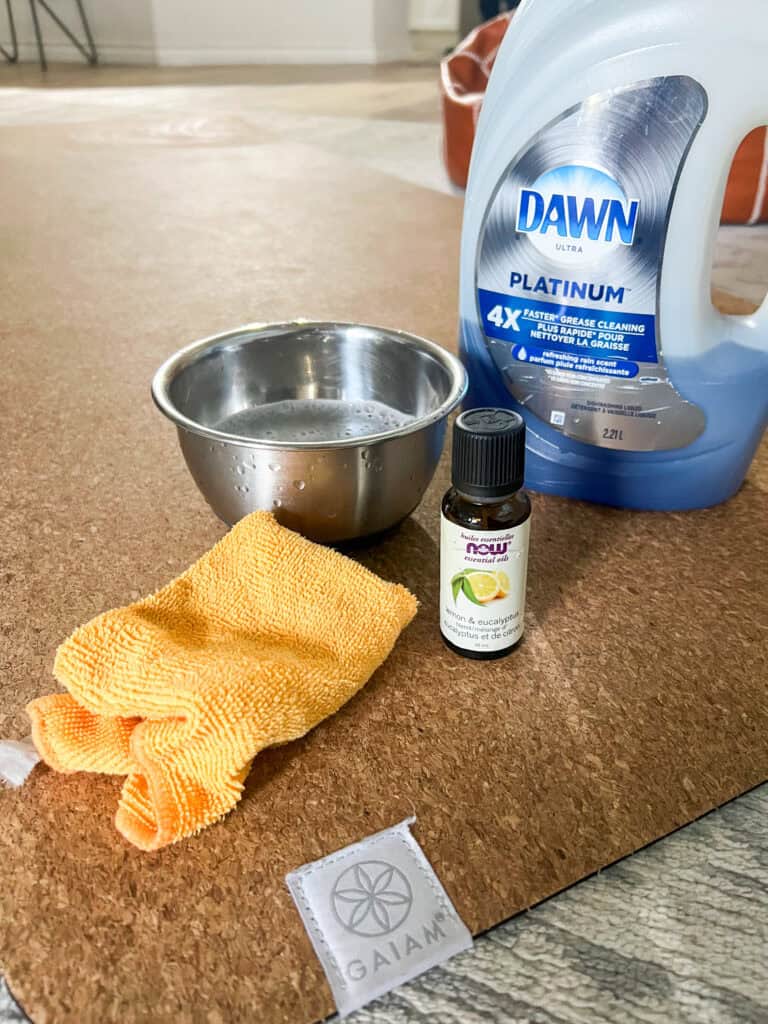
Helpful Tools for Cleaning A Cork Yoga Mat
Here are a few tools that make cleaning your cork yoga mat easier:
- Small Bowl: Use a bowl to mix the ingredients for the cleaning solution.
- Soft Cloth or Rag: A soft cloth or rag is gentle on the cork surface and effective at lifting dirt.
- Spray Bottle (Optional): If you prefer, use a spray bottle to apply the cleaning solution evenly.
- Dry Cloth: After cleaning, use a dry cloth to wipe away excess moisture.
- Outdoor Space or Flat Surface: It’s best to dry your mat outside or in a well-ventilated space to avoid moisture buildup.
How to Make the Cork Yoga Mat Cleaning Solution
- Pour warm water into a small bowl.
- Add a small drop of dish soap.
- Add 3 drops of your chosen antibacterial essential oil.
- Whisk gently to combine the ingredients.
How To Clean A Cork Yoga Mat: Step-by-Step Instructions
- Dip the Cloth: Dip a clean rag into the cleaning solution, then wring it out to remove excess water.
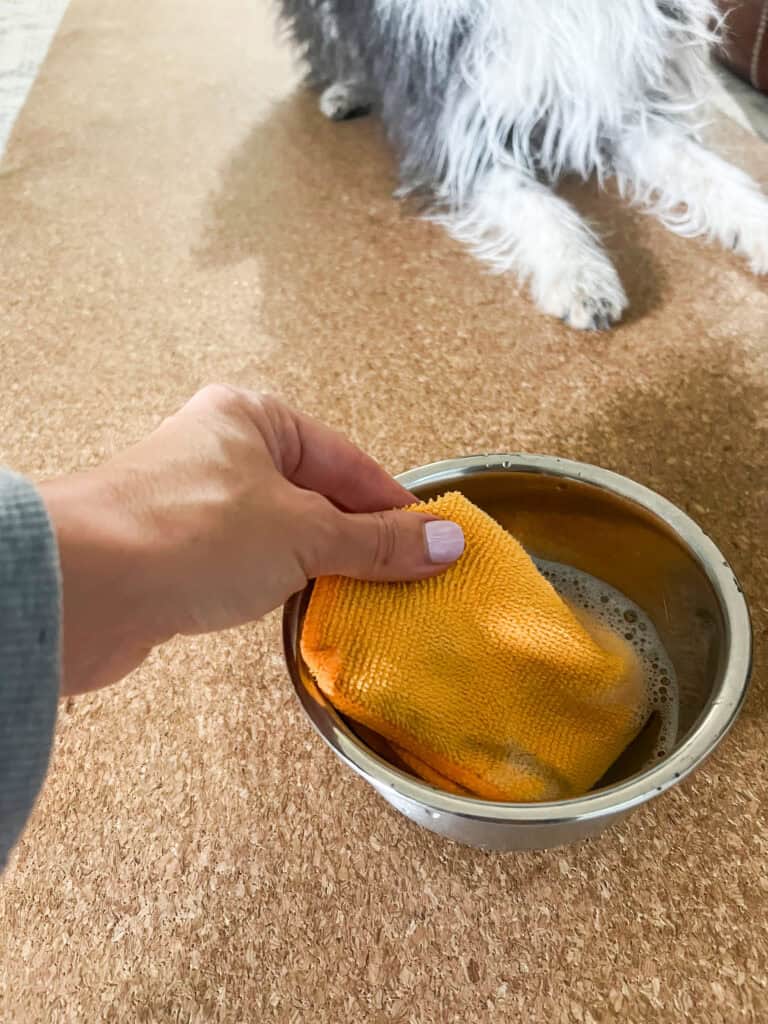
- Wipe the Mat: Using a circular motion, gently clean the surface of the mat, starting on the top cork side. Repeat this step 2-3 times for any stubborn dirt or stains.
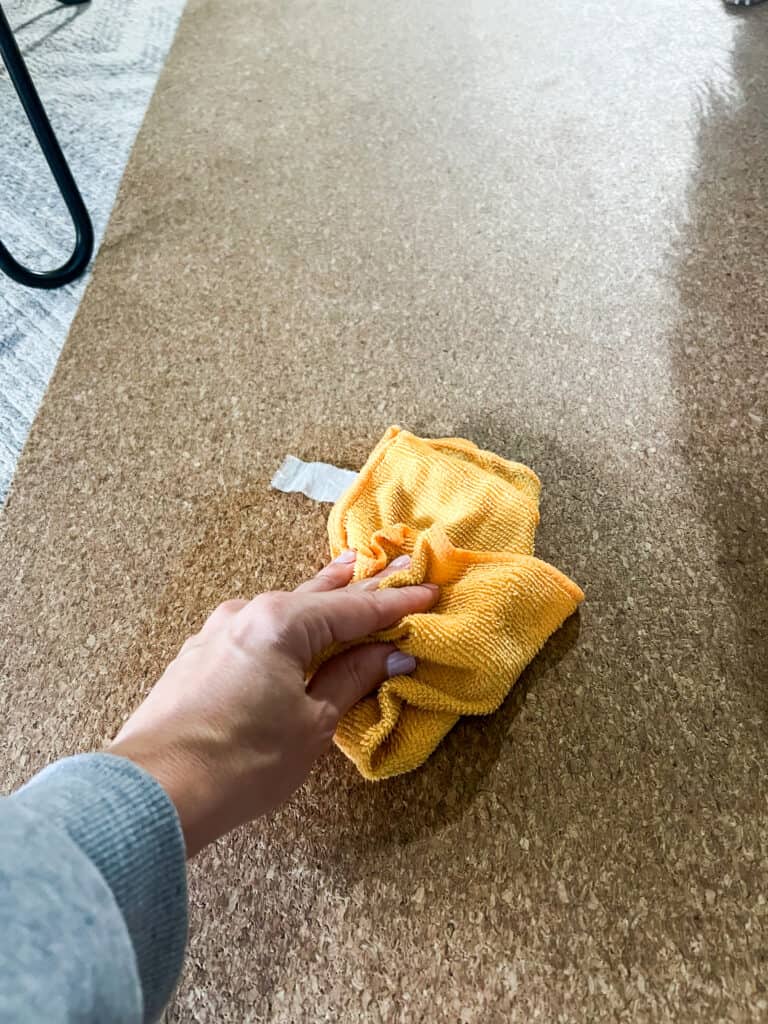
- Dry the Mat: Lay your mat flat in a dry place. It’s best to dry it outside, but avoid direct sunlight, as it may harm the cork’s natural material. Wait until it’s fully dry before rolling it back up. I have found this method the best way to clean a yoga mat.

Essential Oils for Cleaning and Freshening Up
To add an extra touch of freshness to your mat, consider using these essential oils:
- Peppermint Essential Oil
- Tea Tree Essential Oil
- Cedarwood Essential Oil
- Lavender Essential Oil
- Eucalyptus Essential Oil
- Lemongrass Essential Oil
- Lemon Essential Oil
A blend of lemon and eucalyptus is a great way to add a pleasant scent, while cedarwood adds a grounding aroma. These oils are effective in combating odors and freshening up your well-loved mat. All you need is a couple of drops of essential oil to get this solution smelling amazing.
Tips & Tricks for Maintaining a Clean Cork Yoga Mat
- Avoid Excess Water: Too much water can damage the cork. Always use a well-wrung cloth for cleaning.
- Use Mild Soap Only: Harsh chemicals and abrasive cleaners can strip away the natural beauty of cork.
- Dry Thoroughly: Ensure your mat is fully dry before rolling it up to avoid mold or mildew.
- Store in a Cool, Dry Place: Keep your mat out of direct sunlight and moisture to extend its life.
- Quick Wipe-Downs: After each session, a quick wipe with a damp cloth helps prevent buildup and bad smells.
Avoiding Common Mistakes in Cork Yoga Mat Care
One common mistake is using too much dish soap or harsh chemicals, which can strip away the cork’s natural surface. Excess water is also an issue; remember that a damp cloth is all you need. Avoid folding or bending the mat, as this can cause cracks over time.
Can You Use a Washing Machine for a Cork Yoga Mat?
Using a washing machine is not recommended for cork yoga mats. The rough surface and natural materials are not designed to withstand the intense agitation of machine washing. Instead, stick to a gentle, hands-on cleaning approach for best results.
Benefits of Choosing a Cork Yoga Mat Over Synthetic Mats
Cork yoga mats offer a sustainable alternative to synthetic options. They’re naturally antimicrobial, durable, and have a pleasant, organic feel. This makes them ideal for regular practice and especially beneficial for those with allergies or sensitivities.
Taking Care of a Yoga Mat for Long-Lasting Use
Proper care extends the life of your mat. Regular cleaning, proper drying, and avoiding harsh chemicals are essential steps. With these simple steps, your cork mat will look and feel like new for a long time. Depending on the type of yoga mat you can use different cleaners.
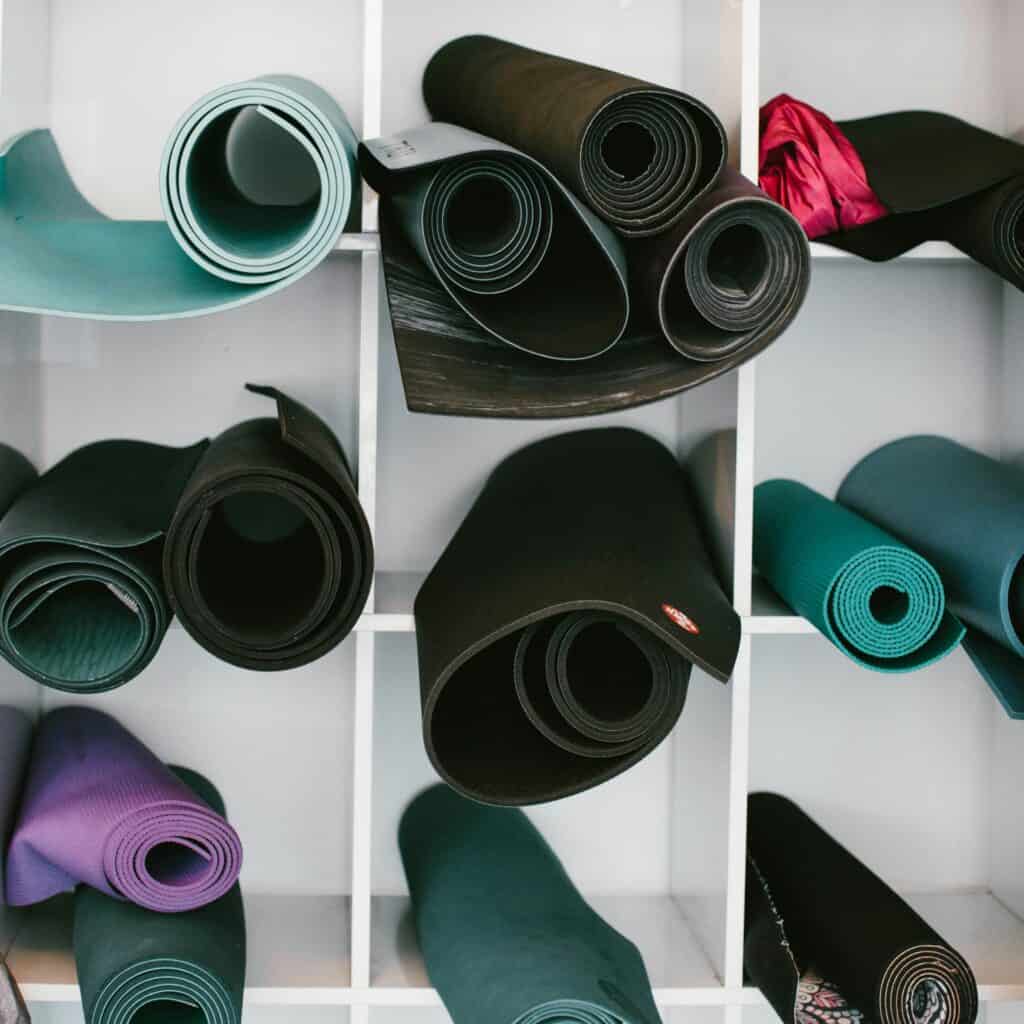
Yoga Mat Materials Comparison Chart
Explore the benefits and drawbacks of various yoga mat materials to find one that aligns with your practice style and values.
| Material | Pros | Cons | Best For |
|---|---|---|---|
| Cork | Eco-friendly, natural anti-bacterial, odor-resistant, excellent grip, cushioned support | Heavy, higher cost, less availability, requires break-in period, can crack | Hot yoga, eco-conscious users |
| PVC | Affordable, durable, good grip, easy to clean, lightweight | Not eco-friendly, non-biodegradable, carcinogenic when heated, can emit odor | Beginners, budget-conscious users |
| TPE | Eco-friendly, hypoallergenic, recyclable, good cushioning, lightweight | Shorter lifespan, expensive, curling edges, light grip when wet | Eco-conscious users, beginners |
| NBR | Affordable, durable, non-slip, cushioned | Not eco-friendly, emits chemicals, heavy, rubber smell, moderate grip | Joint support, budget-conscious |
| Natural Rubber & PU | Biodegradable, eco-friendly, excellent grip, durable, cushioned | Expensive, strong odor, texture varies, sticky effect wears down | All levels, eco-conscious users |
| EVA | Lightweight, flexible, durable, shock-absorbent, affordable | Non-eco-friendly, can emit odor, less traction, compresses over time | Budget-conscious, occasional use |
| Jute | Eco-friendly, good grip, anti-bacterial, natural material, durable | Rough texture, needs break-in, slippery with frequent use, minimal cushioning | Hot yoga, eco-conscious users |
| Cotton & Hemp | Eco-friendly, absorbent, soft, natural grip | Less cushioned, absorbs moisture, heavy, prone to shrinking | Gentle yoga, eco-conscious users |
| Microfiber | Absorbent, lightweight, soft, quick-drying, machine washable | Moderate durability, needs maintenance, less cushioning | Hot yoga, travel |
| Wool | Natural insulation, cushioned, moisture-wicking, anti-bacterial | Heavy, not suitable for hot yoga, harder to clean, may cause allergies | Meditation, restorative yoga |
| Recycled Neoprene | Eco-friendly, durable, good grip, moisture-resistant | Limited availability, emits odor, breaks down in sunlight | All levels, eco-conscious users |
Key Yoga Mat Properties Comparison
Compare essential properties like grip, cushioning, and eco-friendliness to choose a yoga mat that meets your unique needs.
| Property | Material Options | Why It Matters |
|---|---|---|
| Texture | Rubber, Jute, Cork | Prevents slipping, improves grip |
| Thickness | PVC, NBR, Wool | Affects cushioning and support |
| Breathability | Cork, Jute, Cotton | Reduces odor and bacteria |
| Chemical-Free | Cork, Natural Rubber, TPE, Jute, Cotton, Hemp | Avoids exposure to harmful chemicals |
| Durability | Cork, Natural Rubber, Recycled Neoprene | Long-lasting, withstands regular use |
| Eco-Friendliness | Cork, TPE, Natural Rubber, Jute, Cotton, Recycled Neoprene | Minimizes environmental impact |
| Flexibility & Weight | EVA, Cotton, Hemp | Ensures ease of transport |
| Moisture Absorption | Microfiber, Cork | Absorbs sweat, keeps surface dry |
| Insulation | Wool | Provides warmth in outdoor practice |
| Price Range | PVC, EVA, NBR, Cork, Natural Rubber | Affects affordability and quality |
Yoga Mat Style Comparison Chart
Discover different yoga mat styles designed for various preferences and practices, from extra-thick mats to portable travel options.
| Mat Style | Features | Benefits | Considerations | Best For |
|---|---|---|---|---|
| Traditional/Standard | Rectangular, various materials and thickness options | Good for all styles, versatile | May lack space for wider poses | Beginners, general yoga practice |
| Round/Oval | Circular shape, more surface area | Ideal for flowing movements | Limited portability, storage | Gentle/restorative yoga |
| Hourglass | Wider ends, narrow in middle | Additional support and balance | Limited availability | Balance-focused practice |
| Square | Larger surface area, unique shape | Extra room for movements | Limited portability, storage | Gentle/restorative yoga |
| Extra Long | Extended length, more space for taller practitioners | Full-body support | Harder to carry, store | Tall practitioners, Yin yoga |
| Extra Wide | Increased width | Supports broader body frames | Less portability | Practitioners with wider shoulders |
| Extra Thick | Thick cushioning | Joint support, comfort | Bulky, less connection to ground | Sensitive joints, long practices |
| Extra Thin | Lightweight, minimal cushioning | Portable, better ground connection | Less joint support | Travel, balance-focused practices |
| Travel | Thin, foldable, lightweight | Highly portable, easy to pack | Minimal cushioning, less durable | Travelers, on-the-go yogis |
| Rough | Textured surface for enhanced grip | Excellent grip, even with sweat | Rougher feel | Hot yoga, sweaty practices |
| Smooth | Sleek surface, easy to clean | Simple maintenance, soft on skin | Less grip | Daily practice |
| Sticky | High traction, textured surface | Ideal for beginners | May be too grippy for flow practices | Beginners, balance-focused poses |
| Printed | Various colors, patterns | Unique, customizable aesthetic | Can be more expensive | Stylish practitioners |
| Reversible | Dual-sided with different textures | Variety and flexibility | Can be bulkier | Versatile practice |
| Acupressure | Plastic spikes for muscle stimulation | Stimulates circulation, reduces tension | May be uncomfortable initially | Recovery, tension relief |
FAQs
It’s best to avoid vinegar, as it can be too harsh on cork surfaces. Use a mild dish soap instead.
Try using a bit more dish soap in your solution and gently scrubbing in circular motions with a soft cloth.
Essential oils should be diluted in water to avoid damaging the cork. Direct application is not recommended.
Store it in a cool, dry place, out of direct sunlight, and avoid folding it.
When the cork surface begins to peel or loses its grip, it may be time for a new mat.
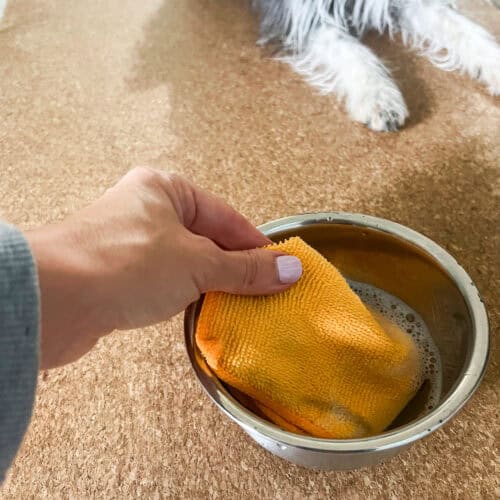
Cork Yoga Mat Cleaner
Ingredients
- 1 cup warm-hot water
- 1 drop dawn dish soap concentrate or ½ tsp any regular dish soap
- 3 drops antibacterial essential oil see notes
Instructions
- Add the dish soap, essential oils and hot water into a small bowl. Whisk to combine.
- Dip a clean rag into the bowl and ring it out.
- Wash the yoga mat in a circular motion. Repeat this step 2 or 3 times if needed (depending on how dirty the yoga mat is).
- Lay it outside to dry or lay it flat inside. Wait until it's fully dried before rolling it back up. Namaste 🙂
Notes
- Peppermint Essential Oil
- Tea Tree Essential Oil
- Cedarwood Essential Oil
- Lavender Essential Oil
- Eucalyptus Essential Oil
- Lemongrass Essential Oil
- Lemon Essential Oil
Conclusion: How To Clean A Cork Yoga
Caring for your cork yoga mat is simple with the right approach. By using a gentle cleaning solution, incorporating essential oils, and following the tips provided, you can maintain your mat’s natural beauty and antimicrobial benefits.
Keep your mat clean, dry, and ready for your next yoga practice, and enjoy the comfort and quality it brings to every session. If you are a fan of this homemade cork yoga mat cleaner, then be sure to check out more of my natural products and cleaning solutions here.

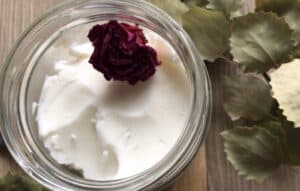
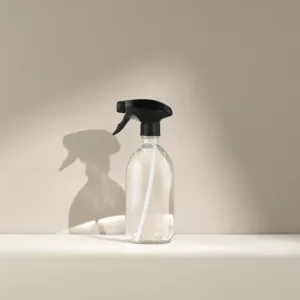

This article was perfect!! I used to use vinegar but I felt that it might be too acidic for the cork mat. But this was awesome so simple and effective. I used a lavender essential oil and smelt great!
I’m so happy you found this helpful! Ahhhh love the smell of lavendar it’s so relaxing and it helps clean the yoga mat!